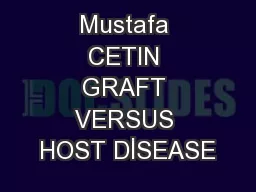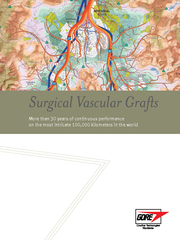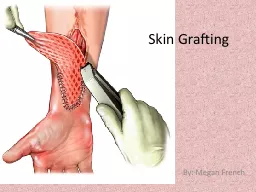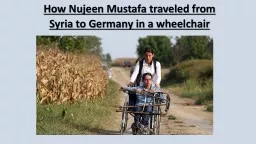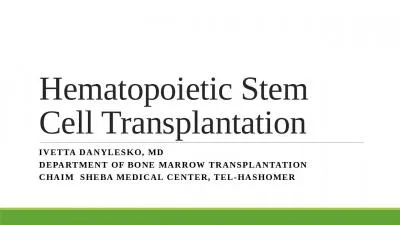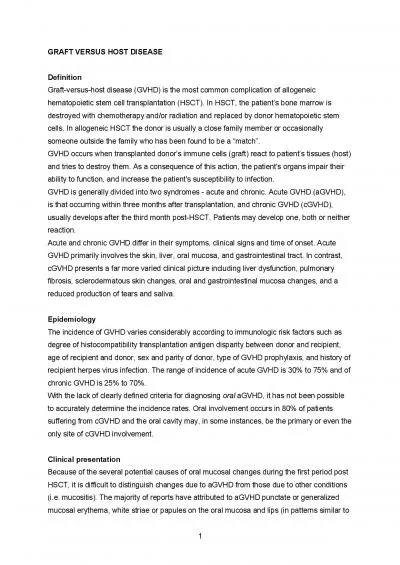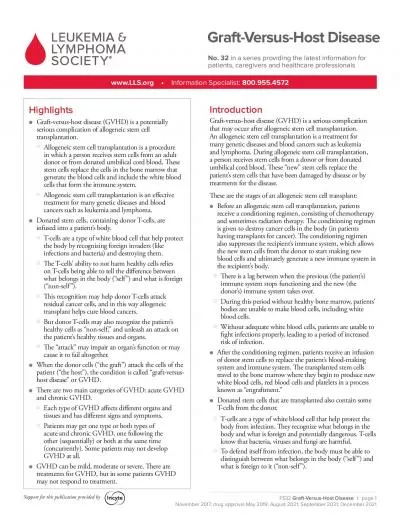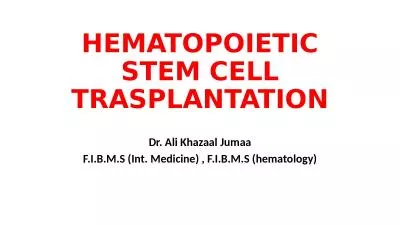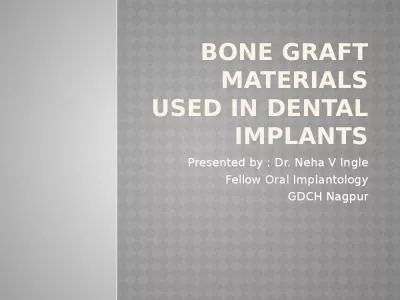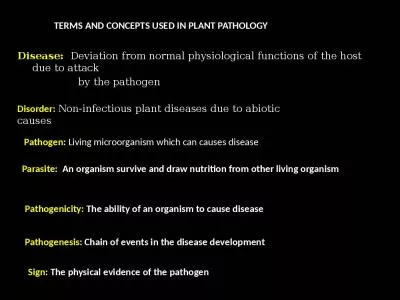PPT-Mustafa CETIN GRAFT VERSUS HOST DİSEASE
Author : conchita-marotz | Published Date : 2018-03-12
ERCIYES UNIVERSITY BMT CENTER KAYSERI2017 GVHD occurs when immune cells transplanted from a nonidentical donor the graft recognize the transplant recipient the host
Presentation Embed Code
Download Presentation
Download Presentation The PPT/PDF document "Mustafa CETIN GRAFT VERSUS HOST DİSEASE" is the property of its rightful owner. Permission is granted to download and print the materials on this website for personal, non-commercial use only, and to display it on your personal computer provided you do not modify the materials and that you retain all copyright notices contained in the materials. By downloading content from our website, you accept the terms of this agreement.
Mustafa CETIN GRAFT VERSUS HOST DİSEASE: Transcript
Download Rules Of Document
"Mustafa CETIN GRAFT VERSUS HOST DİSEASE"The content belongs to its owner. You may download and print it for personal use, without modification, and keep all copyright notices. By downloading, you agree to these terms.
Related Documents

